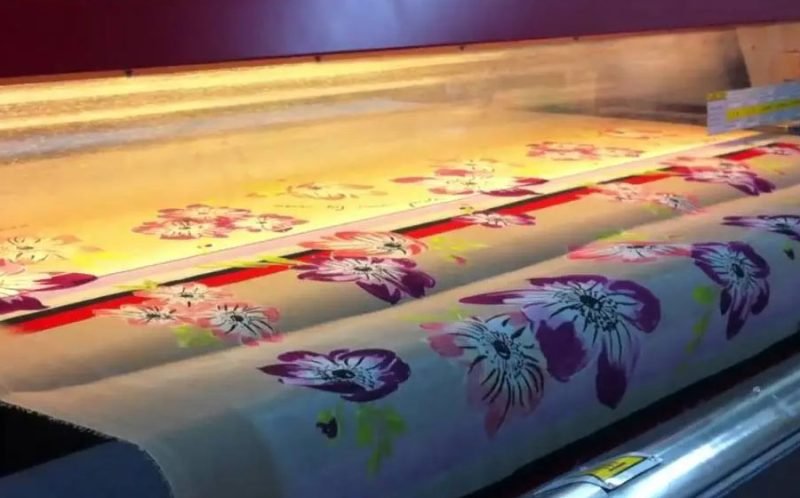
With the advent of digital printing technology, printing anything on fabric has become much easier and more efficient. This innovative approach has opened up a world of opportunities for the industry, allowing it to meet the growing demands for quality textile printing.
Digital fabric printing is an innovative approach that has revolutionised traditional textile printing. While screen printing has been the go-to method for the textile business for a long time, digital technology has opened up a new realm of possibilities for designing fabrics.
This blog post will detail the various aspects, benefits, and applications of digital printing on fabric, providing a comprehensive overview of this cutting-edge technology.
Let us dive into the world of digital fabric printing Australia and discover how this technology is shaping the future of the textile industry.
Table of Content:
- What Is Digital Printing On Textile?
- Technological Advancements in Digital Printing: Improving Quality and Expanding Capabilities
- Digital Printing on Sustainable Textiles
- Applications of Digital Printing in Textiles & Fabrics
- The Benefits Of Digital Printing On Fabric And Textiles
- Final Words
What Is Digital Printing On Textile?
Digital textile printing is a fascinating process that involves generating and designing a print on a computer using specialised textile design software. The design is then printed directly onto the fabric using inkjet printers, producing a precise image.
A printable image is selected or uploaded to create a digital textile print, and the colour information is read using either the LAB or RGB colour system. The design can be printed onto a wide range of fabrics, including shirts, dresses, slacks, shorts, and fashion accessories, as well as home textiles such as pillowcases, sheets, tablecloths, duvets, upholstery, and drapes.
During printing, tiny droplets of ink are used to produce the desired colours and design on the fabric, resulting in a vibrant and detailed final product. With digital textile printing, designers can achieve precision and customisation that was once impossible with traditional printing methods.
Technological Advancements in Digital Printing: Improving Quality and Expanding Capabilities
Digital printing has come a long way since its inception. Here are some of the key advancements that have taken place so far and have contributed significantly to the popularity of this printing method:
- High-resolution printing: With the arrival of high-resolution inkjet printers, digital printing can now produce prints with a much higher resolution than before, resulting in sharper images and more intricate designs.
- Advanced ink technologies: The development of new and advanced ink technologies has dramatically improved digital prints’ colour accuracy, vibrancy, and durability. For instance, UV-curable inks have enabled digital printing on a wider range of substrates, including rigid materials such as plastics and metals.
- Variable data printing: This technology allows for custom fabric printing in a short run, such as printing different text or images on each item, making it ideal for personalised products and marketing campaigns.
- Large format printing: digital printing can now produce larger print sizes, making it suitable for banners, posters, and other large-scale applications.
- Direct-to-garment printing: Digital printing technology has expanded to include direct-to-garment printing, which allows for printing directly onto the fabric. This process provides high-definition images, sharp text, and vibrant colours on various fabrics.
Digital Printing on Sustainable Textiles
Sustainable printable textiles refer to fabrics made from sustainable materials and manufactured using eco-friendly processes that minimise the environmental impact.
These textiles are made from natural and organic fibres, recycled materials, or both. They are designed to reduce the use of water, energy, and chemicals in their production. Organic cotton, recycled polyester, hemp, linen, Tencel, and bamboo are examples of sustainable textiles.
This form of digital printing involves using eco-friendly dyes, inks, and substrates to create biodegradable prints free from harmful chemicals.
Digital printing on sustainable textiles is also more efficient and cost-effective than traditional methods, as it eliminates the need for pre-treatment processes and reduces ink waste. Furthermore, digital printing allows for custom fabric printing and small print runs, reducing the amount of excess inventory and textile waste.
Applications of Digital Printing in Textiles & Fabrics
Here are some of the most common applications of digital printing in the industry:
Fashion: Designers can create unique and intricate designs that are difficult to achieve using traditional printing techniques. Digital printing also allows customisation, enabling fashion brands to produce personalised garments and accessories.
Home textiles: With digital printing, designers can produce intricate patterns, designs, and images that are vivid and colourful, enhancing the aesthetic appeal of the textiles.
Advertising: Digital printing is widely used to produce banners, flags, and other promotional materials. Large-format digital printing allows for the creation of high-quality graphics that are perfect for outdoor advertising and promotional events.
Marine Textiles: Digital printing on marine textiles and fabrics can produce custom-made boat covers, bimini tops, and other marine upholstery products.
Interior design: Digital printing is increasingly used to create custom wallpaper, murals, and other decorative elements. It allows designers to create intricate and complex designs, transforming interior spaces into unique and vibrant environments.
The Benefits Of Digital Printing On Fabric And Textiles
Digital printing offers several benefits for fabrics and textiles, including:
- Digital printing allows for faster production times since there is no need for screens, plates, or other setup materials.
- It allows for the customisation of each print, making it ideal for personalised products or marketing campaigns.
- With technological advancements, digital printing can produce high-quality prints with sharp images, vibrant colours, and intricate designs.
- Since digital printing doesn’t require the creation of screens or plates, there is less waste generated in the printing process.
- Digital printing can be cost-effective for short runs, as no setup costs are involved.
- Digital printing can be used on various fabrics, including cotton, silk, polyester, and technical fabrics.
- Digital printing on sustainable textiles can reduce water and energy consumption and minimise waste, making it eco-friendly.
Final Words
Digital printing is helping meet the demand for eco-friendly textiles by reducing waste, using less water and energy, and allowing for custom fabric printing.
It also enables printing on sustainable fabrics, such as organic cotton and recycled polyester, and offers new sustainable fashion and home decor opportunities. As technology advances, it is exciting to think about the future possibilities of digital printing in the fabrics and textiles industry.









